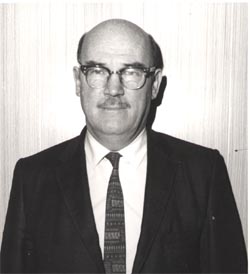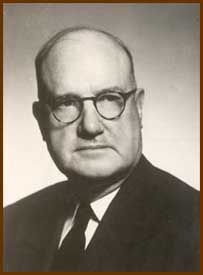In 1965 the 142nd General Synod of the Reformed Presbyterian Church of North America, General Synod, convened at Covenant College, Lookout Mountain, Tennessee, on April 2. On the same date and place the 29th General Synod of the Evangelical Presbyterian Church was convened. Each of these synods carried on their work until April 6 when the two denominations were united to become the Reformed Presbyterian Church, Evangelical Synod. The uniting service was held at 10:00 a.m. on Tuesday, April 6, 1965, and this service was followed by sessions of the 143rd General Synod of the Reformed Presbyterian Church, Evangelical Synod. The business of the united synods was concluded on April 8, 1965.
Paul Woolley, long-time professor of church history at the Westminster Theological Seminary in Philadelphia, wrote in his foreword to The History Behind the RPCES,
FOREWORD Three of the liveliest of the smaller Presbyterian Churches in the United States are the children of the action of the General Council of the Presbyterian Church in the U.S.A. in determining to demand in the fall of 1933 that the Independent Board for Presbyterian Foreign Missions be dissolved. Presumably the General Council foresaw that the demand would not be honored. Probably, therefore, it expected to be the father, as it were, of at least one new Presbyterian Church. Whether it counted on triplets is dubious. Its technology was probably not that far advanced.
Population control was not a watchword in the early thirties but it has always seemed odd behavior to find the General Council crying loudly for ecumenicity and at the same time requiring the formation of at least one new Presbyterian Church and, in the event, three: the Bible Presbyterian Church, the Evangelical Presbyterian Church (now a part of the Reformed Presbyterian Church, Evangelical Synod), and the Orthodox Presbyterian Church.
This is but one indication of the fact that large Churches are generally much more closely oriented to money and power than Jesus was. It raises the question of whether an increase in the size of a Church is always a blessing. The people who are running things become tremendously interested in their authority and in the means by which they can realize their dreams. Some large corporations have found it advisable to have their divisions compete. Buick and Oldsmobile are each not entirely averse to capturing sales from the other
From Twenty Nine Years of Age to One Hundred and Forty Three Years of Age
A new church was born on this date, April 6, 1965, at ten o’clock in the morning. Actually, it was not a new church but simply the merging of two historic Presbyterian bodies dating back to the formation of our country. The Evangelical Presbyterian Church had come out of the stream of the Presbyterian Church in the United States of America. The Reformed Presbyterian Church, General Synod had come out of the Scottish Covenanter heritage. Both churches had been courting each other from 1957 to 1964 with continual contact.
Each denomination held dearly to the Scriptures of the Old and New Testaments, as being the inspired Word of God, without error in whole and part, the only infallible rule of faith and practice. Each church body held to the subordinate standards of the Westminster Assembly as being a summary of the teaching of the Old and New Testaments. They proclaimed the good news of salvation to a lost world as the only hope of reconciliation with the holy God. The fundamentals of historic Christianity, being only Scripture, only Christ, only grace, only faith, and only to the glory of God, were part and parcel of their belief structure.
Each church had been weathered by internal divisions in their past history. In the case of the Evangelical Presbyterian Church, they had the experience of coming out of the apostasy of the mainline Presbyterian church in the mid 1930’s, where a stand for the fundamentals of the faith translated out to being deposed by the modernists who had gained control of the church. Then in 1938 and 1956, further issues over eschatology and Christian liberty as well as independent agencies verses synod control agencies, truth in Christian living, and questions about separation from brethren, brought into existence the Evangelical Presbyterian Church in 1961.
In the case of the Reformed Presbyterian Church, General Synod, the issue in 1833 was the relationship of the church to the civil government. They had no problem supporting the Declaration of Independence in 1776, but the Constitution a dozen or so years later was another matter. Should its members vote, for example, in a country which did not recognize itself as a Christian nation? Should they serve on juries, with oaths involved? Should they serve in the armed forces? Should exclusive psalmody be the standard of worship services? All these were questions which were asked, debated, and voted upon by the church.
When the two bodies met concurrently in 1965 at Covenant College, the issues had been faced squarely by godly men for eight years. Both churches voted to merge with each other, and combining their names into the Reformed Presbyterian Church Evangelical Synod. What has been a church of twenty-nine years became a church of one hundred and forty-three years years of age after one meeting!
Words to Live By: The Psalmist David proclaimed words of wisdom for all church bodies and Christians when he wrote “BEHOLD, how good and how pleasant it is for brethren to dwell together in unity!” (KJV – Psalm 143:1)




